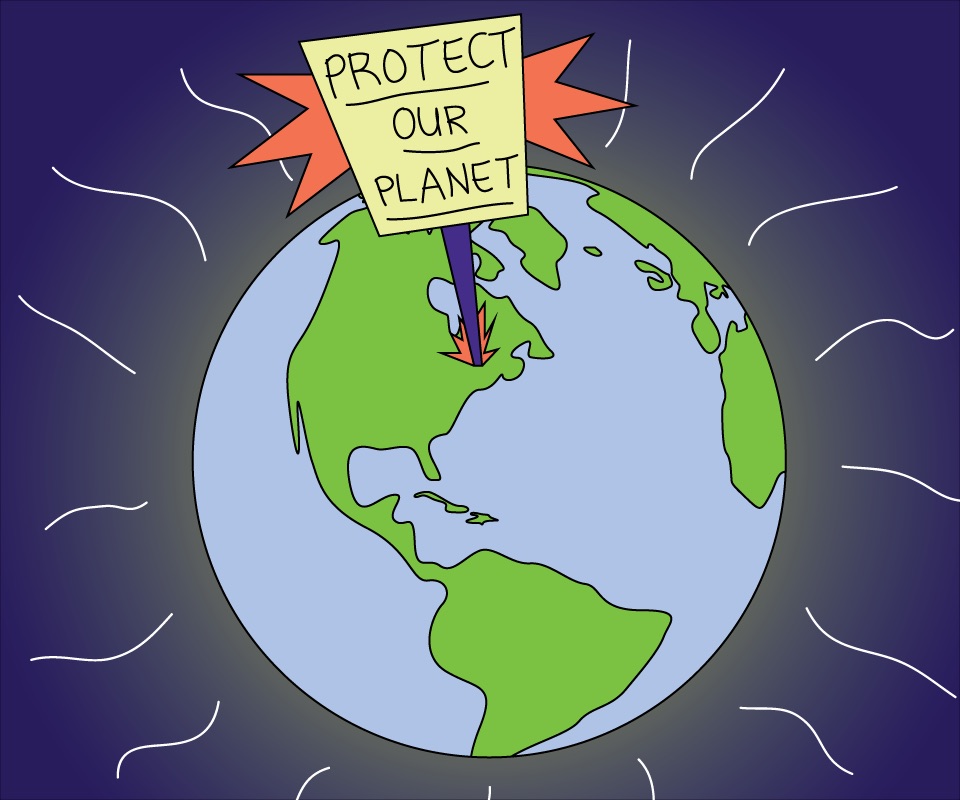Why the upcoming protest about climate change is needed
On Friday, March 15, from 12 p.m. to 4 p.m., many Concordia students will participate in a walkout to protest inaction from authority figures on the issue of climate change. The strike will be in solidarity with international climate strikes and walkouts in other institutions in Montreal, such as McGill and UdeM. Later in the day, protesters will join a Montreal-wide march to stand up for climate action.
Now, although I do not condone skipping class, I would like to stress the importance of the call to action this protest aims for: to raise awareness on the current environmental crisis we find ourselves in and to act now for a more sustainable future for our planet. To get a little scientific, the Keeling curve (which many aren’t aware of) is a graph of the accumulation of measurements of the concentration of CO2 emissions taken at the Mauna Loa Observatory in Hawaii from 1958 to today. The sense of urgency to take action stems from the Keeling curve, as it has been increasing—this year it has reached its highest level of CO2 concentration measured ever!
As a Master’s student in environmental assessment, in the Department of Geography, Planning and Environment, I’ve learnt about the environmental science behind these issues firsthand and the detailed extent of how humans impact the planet. Just last week, our class visited the Anthropocene exhibit at the National Gallery of Canada. Witnessing attendees appreciate the beauty in photos of environmental destruction as art was terrifying, to say the least. However, it did bring about an opportunity for the public to learn about the effects we’ve imposed on our environment, similarly to what the walkout aims to do.
March 15 is an important date since many schools will be on strike that day to follow the European demonstration movement initiated by Greta Thunberg, a 16-year-old Swedish political activist working to fight against climate change and global warming. It is crucial to acknowledge that this walkout is a response to a global issue. It is also important to emphasize the international scale of this crisis, as seen by the lone protest of Thunberg. Her actions have led to a powerful global movement of school climate strikes, spreading to countries in the UK, Australia, Belgium, Germany, the United States, Japan and dozens more, demanding politicians act on behalf of the planet, according to The Guardian.
At the UN Climate Change COP24 in Katowice, Poland, in December 2018, Thunberg announced, “[World leaders today] only talk about moving forward with the same bad ideas that got us into this mess even when the only sensible thing to do is to pull the emergency brake.” Following this urgency for action against today’s environmental issues, Concordia’s Department of Geography, Planning and Environment has begun a number of projects in support of raising awareness and promoting ways to reduce our environmental impact.
Some of these projects include Concordia’s Climate Clock, which shows how current greenhouse gas emissions affect our planet’s trajectory to reach two degrees. Another project is Climate Bytes, which aims to translate complicated studies on climate change into “digestible byte-sized pieces of information” for the public to more easily understand the science behind these issues. Another is the newly formed Climate Emergency Committee, which allows students within the department and professors in the field to come together and discuss the issues and ways to move forward in addressing these problems.
To learn more about these issues, I invite you all to attend the upcoming Sustainability in the City and Beyond conference from March 19 to 21 at the Loyola Jesuit Hall and Conference Centre. Here, the Climate Emergency Committee will be speaking more about their work.
Remember, the need for action is urgent, and the time to become aware of environmental issues and how to help is now!
Graphic by Ana Bilokin




